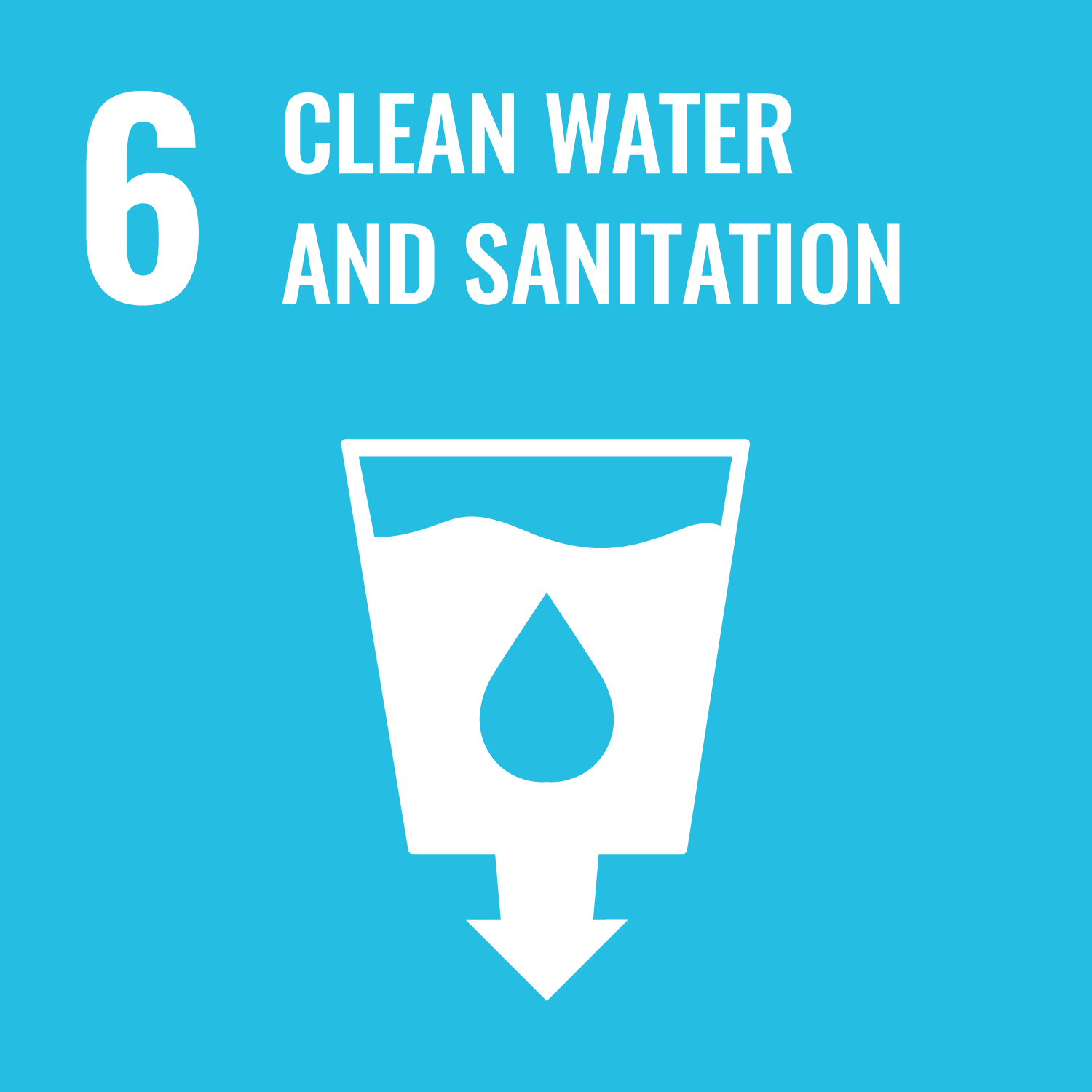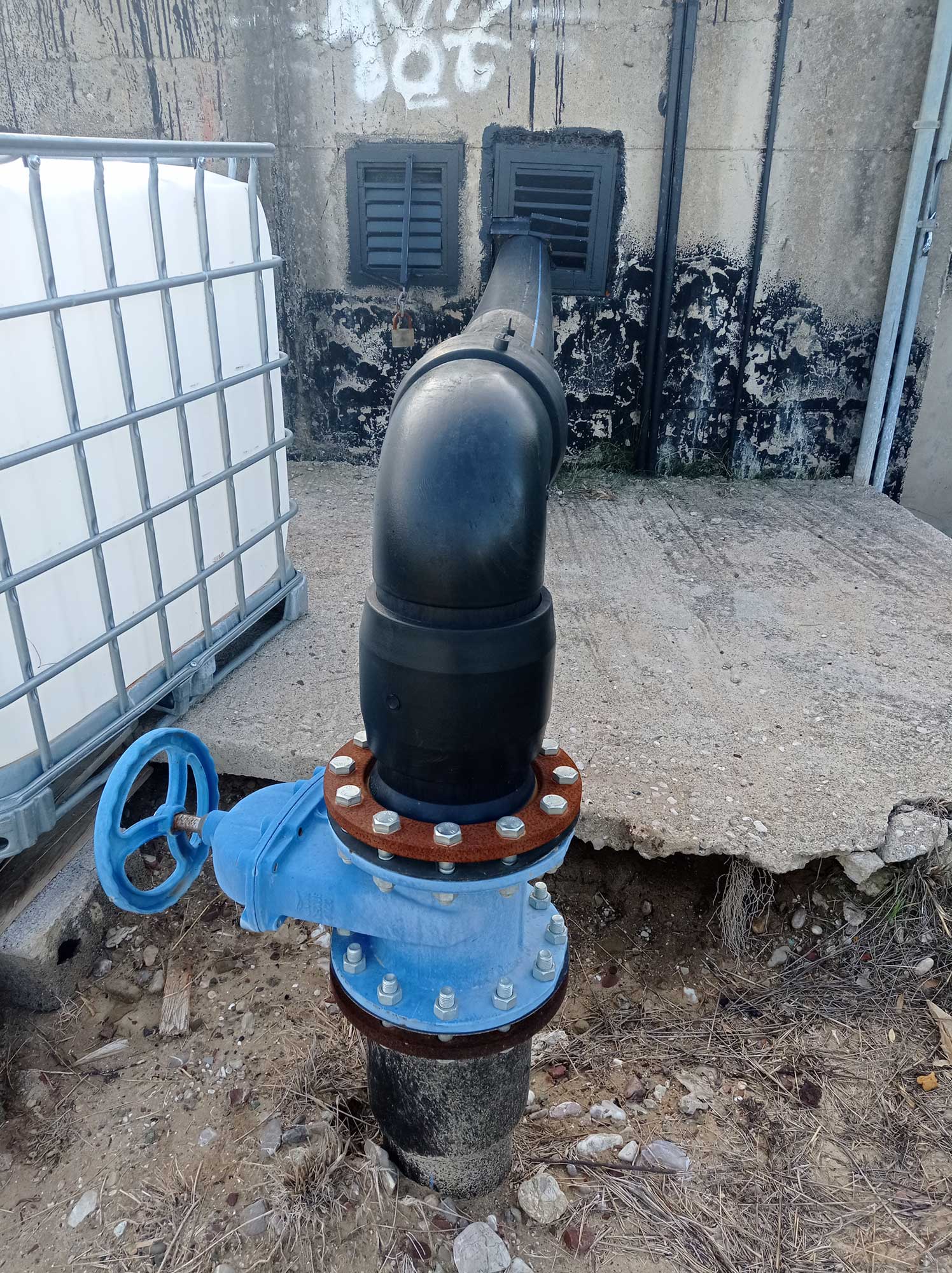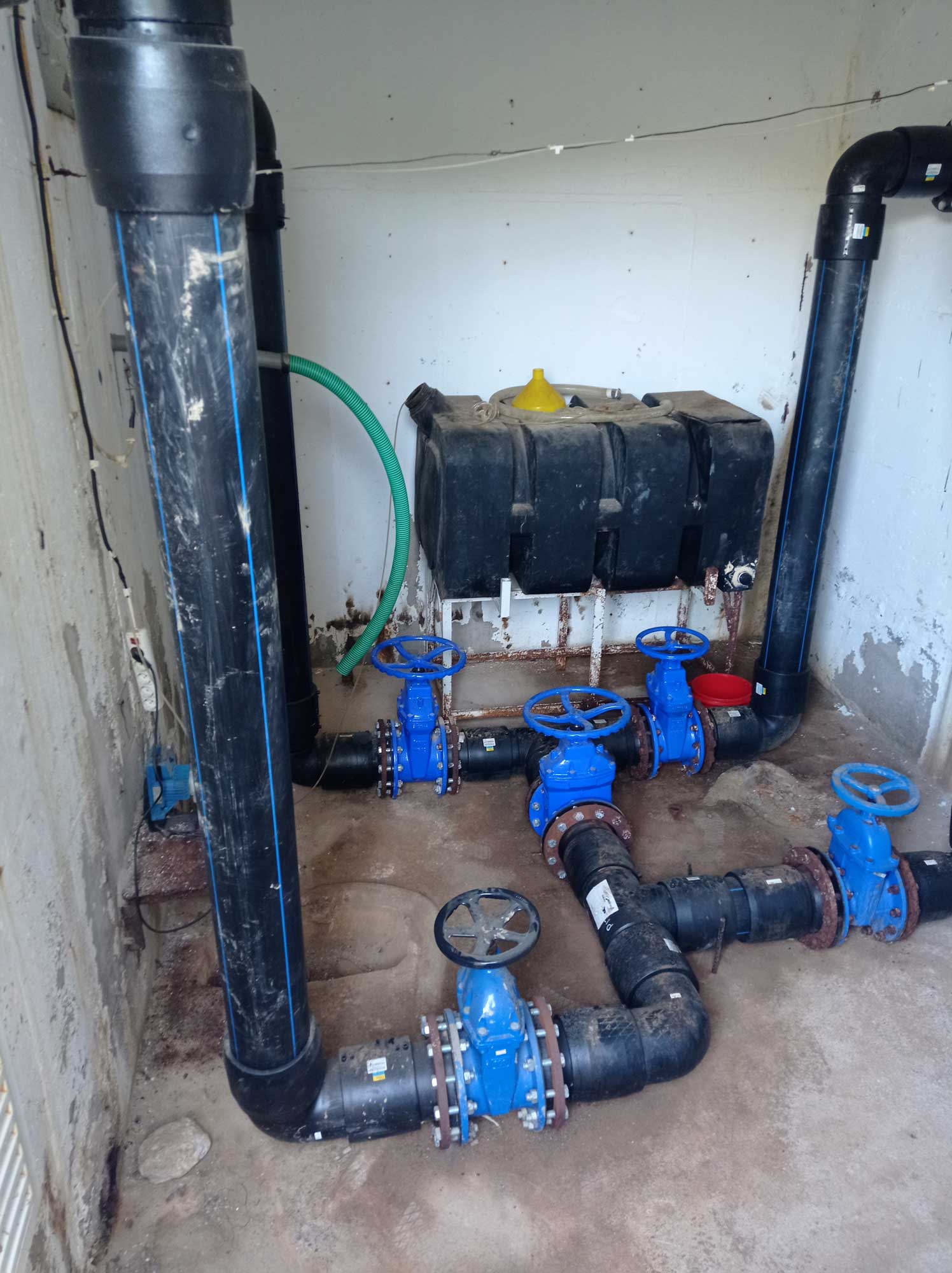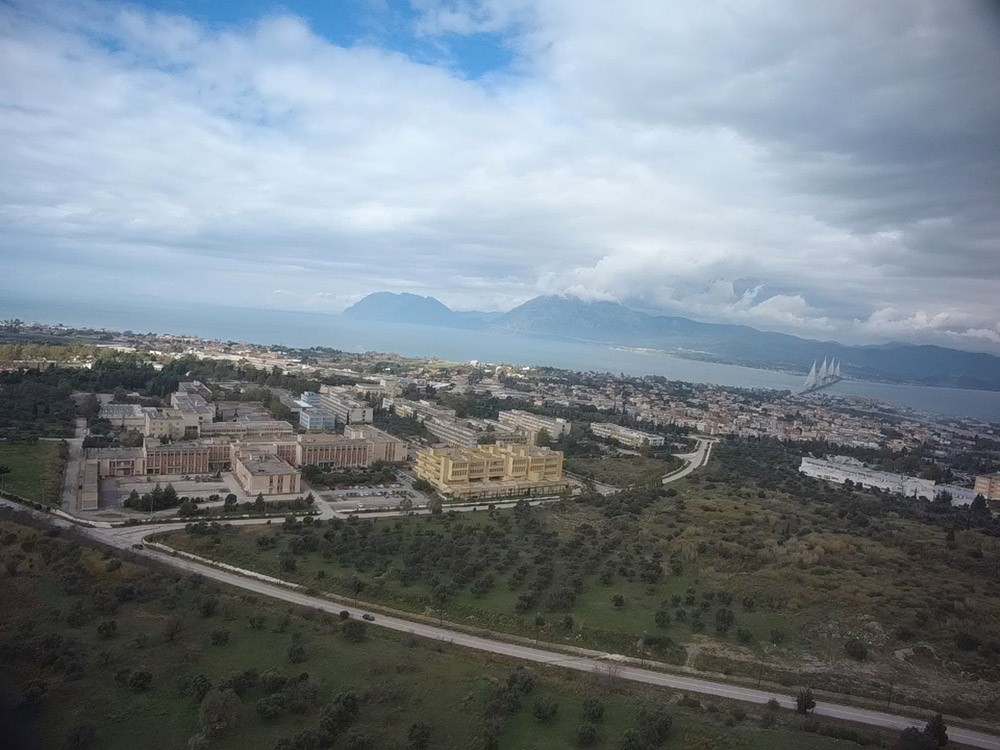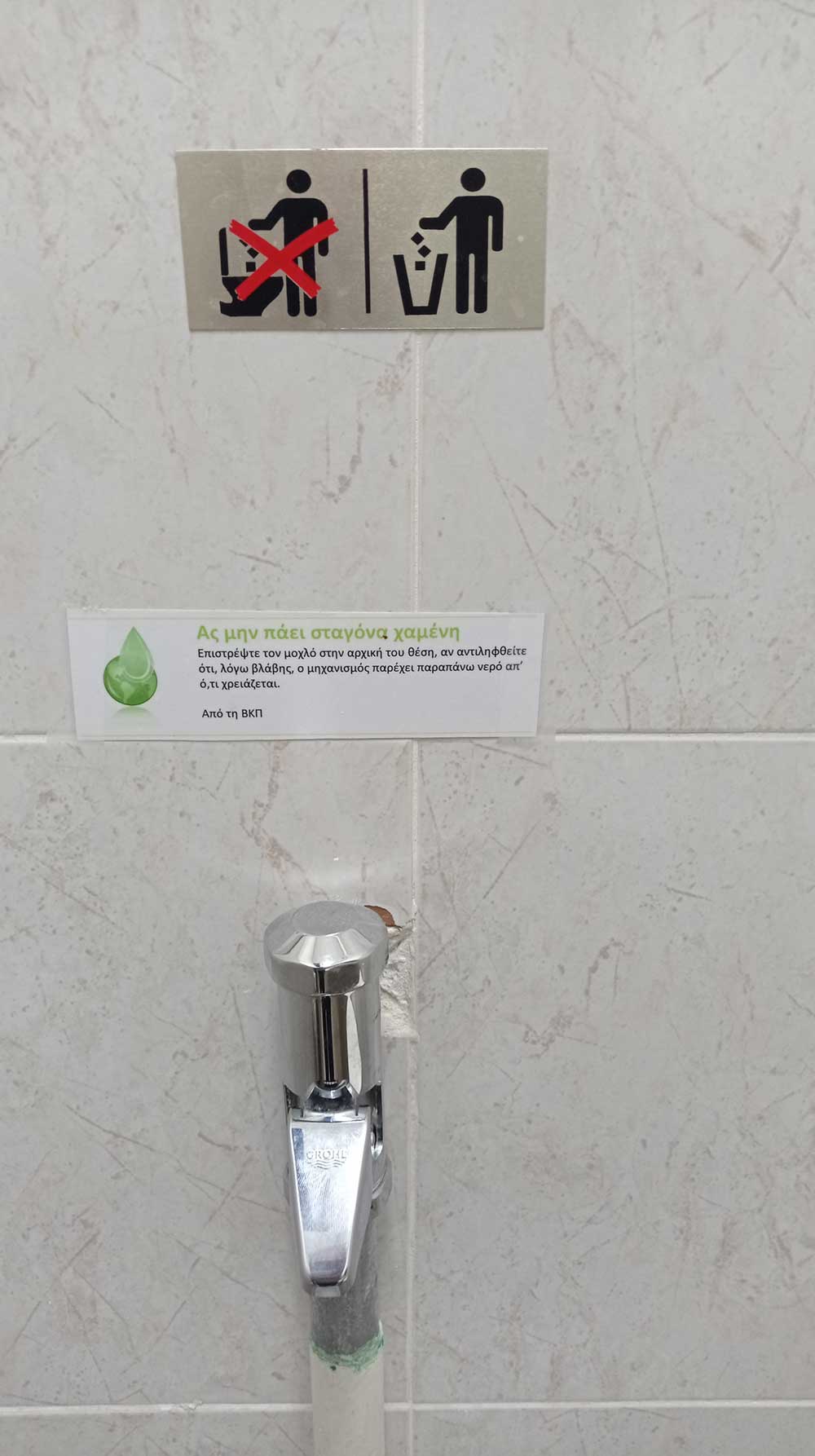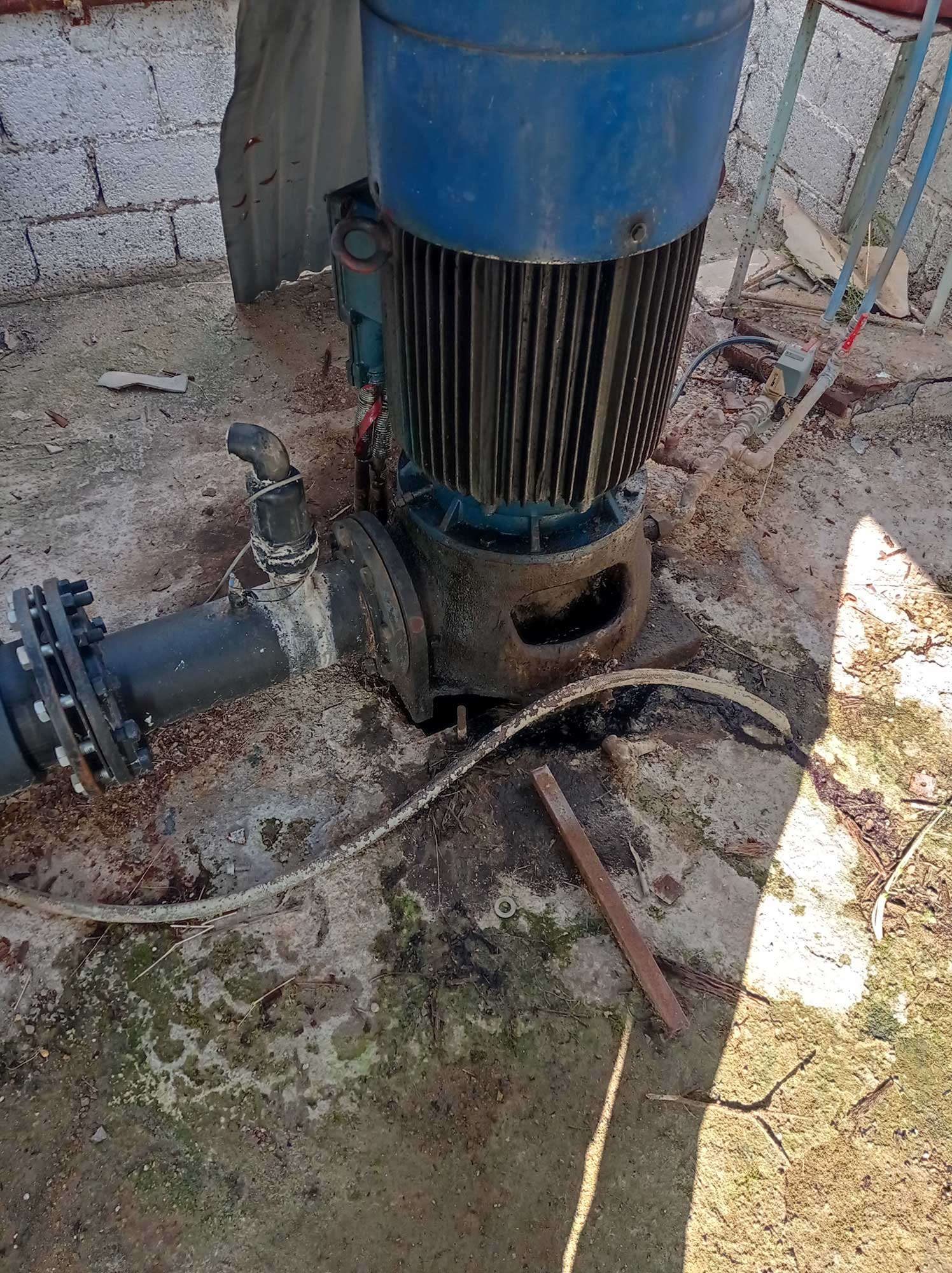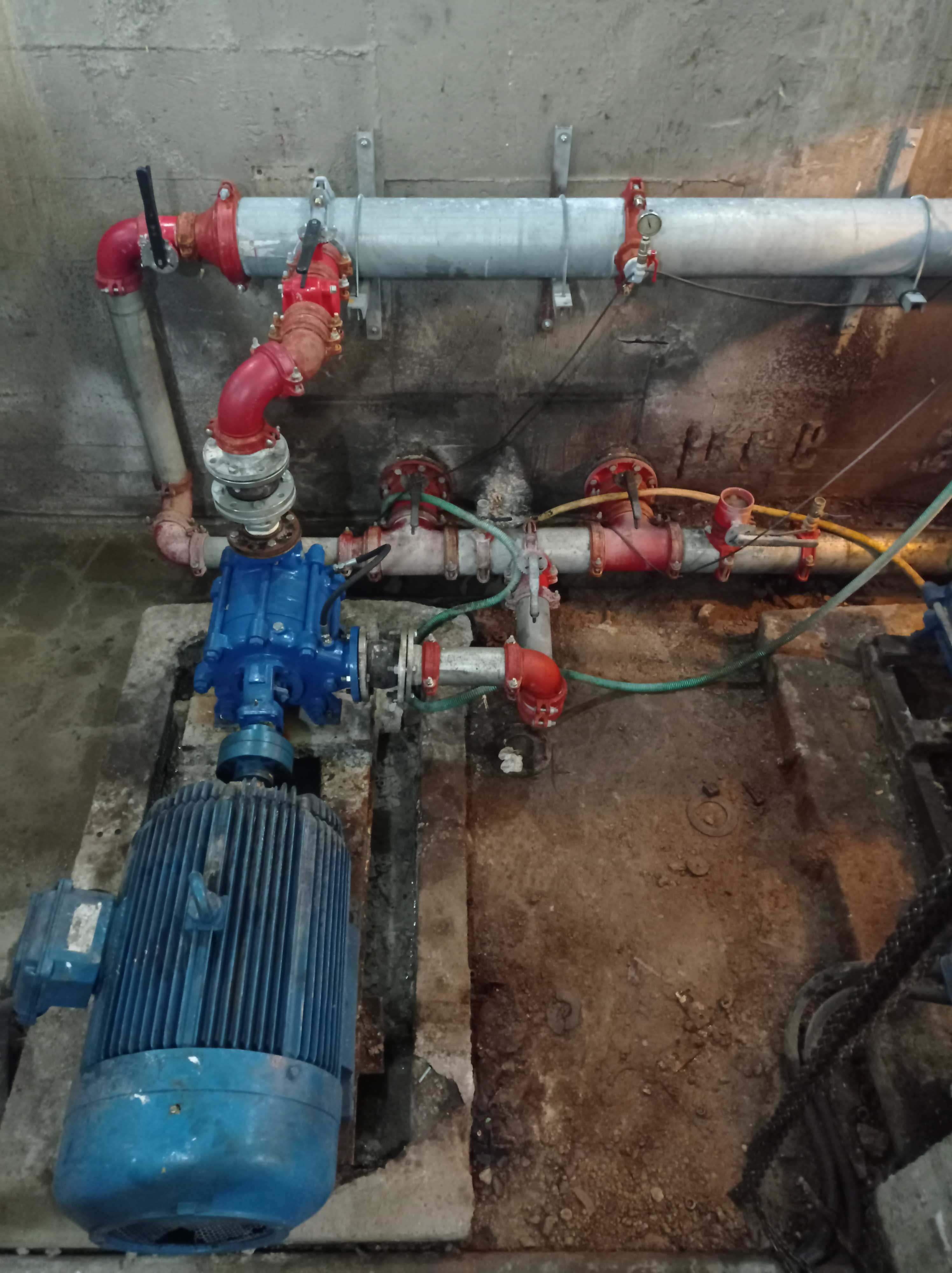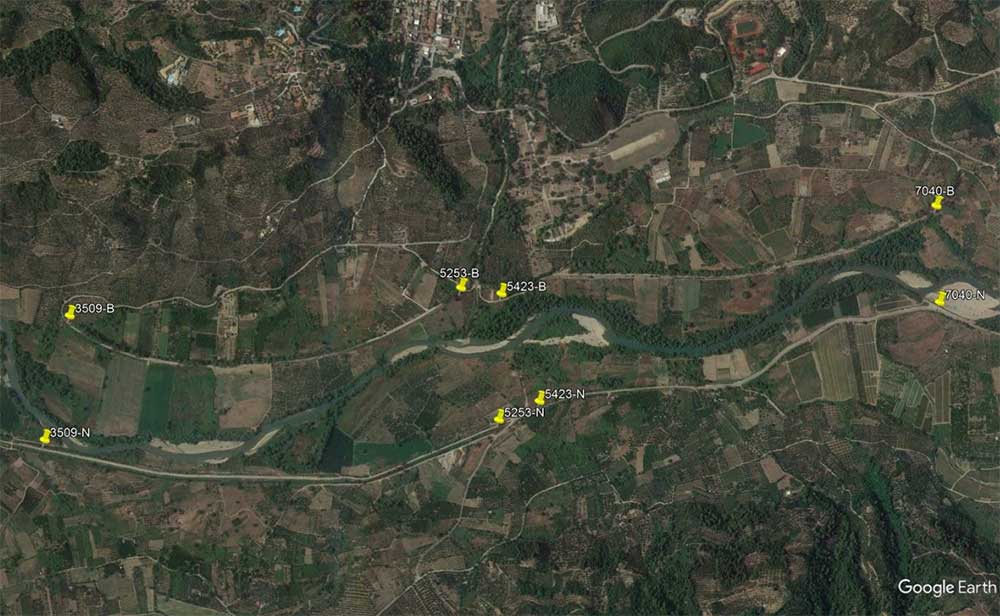6. Clean Water & Sanitation
Data for the indicator 6.1. Research on water (6.1.1 Clean Water and Sanitation: CiteScore, 6.1.2 Clean Water and Sanitation: FWCI, 6.1.3 Clean Water and Sanitation: publications) is being collected via Scopus.
6.2 Water consumption per person
37.07 L per person (as product of the division 890m3 per day / 24,277 per day)
Methodology
- We record the daily water consumption [A= 900m3/day], as provided by the pumping stations and tanks.
- We record the number of members of the academic community per category and we determine the attendance rate of each category of staff (for permanent staff based on the provisions of the law, for students and contract workers an estimate). Then, we calculate the daily attendance per staff category and overall [B= 24,277 persons].
- Finally, we calculate the water consumption per person per day: [A]/[B]
Comparing the above absolute value with the mean water consumption in Greece, ~150 L per capita per day, our equivalent water consumption index is reasonable and even more efficient taking into account: a) the variance of attendance during the year (e.g. the months of July and August are characterized by minimal student attendance), b) Christmas and Easter holidays, c) the mean hours spent by each member of the community in the campus, and d) the breakdown (uses) of water consumption matching activities in the campus and the full water use profile for the students residing in the dormitory.
6.3 Water usage and care
6.3.1 Wastewater treatment
The Wastewater Treatment Plant of the Campus of the University of Patras covers the needs of both the University and the University Hospital. The technical details of the Plant are as follows:
- Wastewater Flowrates 1200-1500 m3/d ~500.000 m3/yr
- Low strength domestic wastewater. Organic load 250mg/L COD (Chemical Oxygen Demand), 120 mg/L BOD5 (5 days Biochemical Oxygen Demand)
- Secondary treatment (activated sludge extended aeration system, (biological and chemical processes used to remove organic matter from wastewater)
- Main process unit: Extended Aeration tank (Oxidation Ditsch 1400 m3 with horizontal Brush Aerators (2Kaessener Mammut Rotors 30KVA)).
- Retention Time >18h, Organic matter removal and partially denitrification
- Effluent characteristics: COD< 30 mg/L (legislation limit 125), BOD5 <10 mg/L (Legsl. Limit 25), TN < 15mg/L, TP= 2-4 mg/L, SS (Suspended Solids) <25 mg/L
Drone recording of the Wastewater Treatment plant by Vangelis Tsiotsis.
6.3.2 Preventing water system pollution
During Over the previous years, the asbestos pipes of the entire water supply network asbestos pipes haves been replaced and e and there has been an extensiveded repairrepairing work was also undertaken on of the University's main water supply tank. Parts of the old asbestos pipes of the primary water supply network were replaced with new polyethylene pipes and, at the same time, manholes were constructed for the installation of new valves. The sections briefly concern (1) the replacement of the depression (pressure) pipe from the node of the central outpost of the University of Patras to the central water supply pumping station, (2) the replacement of the gravity (supply) pipeline from the node of the central outpost of the University to a point near the node of the University Hospital, (3) the replacement of the gravity (supply) pipeline from the Geology node to the central point of the Library and Biology-Mathematics buildings area wells, (4) the new water supply for the central outpost of the University and (5) the replacement of the gravity (supply) pipeline from the node of the Holy Temple of the University to the node of the Department of Civil Engineering building to the new PC building.
The sections of the new primary water supply network are made of 3rd generation polyethylene pipes, 16bar, PE 100. All pipes are suitable for potable water networks and are accompanied by the appropriate certificates.
The extracted water, as well as the treated effluent is disinfected with a 12% w/v sodium hypochlorite solution NaClO.
The left image shows visible parts of the pipe network which have been replaced with polyethylene pipes and the right image the chlorination station that prevents water pollution.
6.3.3 Free drinking water provided
The water is potable throughout the University campus.
An image of public water taps in the student restaurant.
6.3.4 Water-conscious building standards
The sanitary ware has reset mechanisms, an adjustable float, a double switch for high and low water supply and are generally designed with a view of saving water resources. All current water supply networks are compliant with the latest technological standards. As it has been described beforehand, the primary water supply network is being made of 3rd generation polyethylene pipes, suitable for potable water networks.
6.3.5 Water-conscious planting
The University has the largest campus in terms of area in the country. It is surrounded by an olive grove. The trees are not water consumption and help the rain waters drain easier. The grove is being collected every Autumn, producing its own oil.
Drone photo of part of the olive grove, next to the Library and the Civil Engineering buildings provided by Vaggelis Tsiotsis.
6.4 Water reuse
A network for the treated wastewater to be used for irrigating 20 hectares (200 acres) of land south of the Campus is currently being installed.
6.5 Water in the community
6.5.1 Water management educational opportunities
The Campus Wastewater Treatment Facility is utilized for the training of undergraduate and graduate students and for the preparation of diploma theses. An indicative list of theses and dissertations can be found below, with links from the Institutional Repository (see indicatively http://hdl.handle.net/10889/5163 and http://hdl.handle.net/10889/13432). It also provides activated sludge to various laboratories of the University for BOD measurements (5d(index)) as well as inlet (raw sewage) and outlet (treated sewage) samples of the installation.
6.5.2 Promoting conscious water usage
Throughout the campus there are signs for the proper use of water. Below you may find an image of a sign in the library building.
6.5.3 Off-campus water conservation support
Since 2020, the University supports the Municipality of Patras and the Municipal Water Supply and Sewerage Company of Patras (DEYAP) with its wastewater management. This is taking place in the frame of the "RE-water -Eco technologies for the waste water management", financed by the "COOPERATION PROGRAMME: (Interreg V-A) EL-IT - Greece-Italy" EU. Quoting from the official announcement on the website of the Municipality of Patras (in Greek):
DEYAP in recent years has expanded cooperation with departments of the University of Patras for the development and application of new technologies in Water Supply-Sewage and wastewater treatment. Within the framework of this policy, it also participates in the action of the Interreg Greece-Italy Cooperation program entitled "RE Water- Management".
6.5.4 Sustainable water extraction on campus
Currently there are two pumping stations in the University, using the water table at 60 meters depth. With the replacement of the pipe network and the rest of upgrading procedures, the University is lowering water consumption from 900 m3 in 2022 to 750 m3 in 2023, with the ambition to further lower it the next couple of years.
Images of the pumping stations.
6.5.5 Cooperation on water security
During the period 2021-2023 the Hydraulic Engineering Laboratory of the Department of Civil Engineering collaborated with the Regional Government of Western Greece on the project "Proposals of short-term measures and interventions to limit the intensity of flooding phenomena in critical parts of the hydrographic network of P. Alpheios, including P. Kladeos (lowland bed) and Erymanthos, following the fires of August 2021". Below one can find one of the images from the technical report on the protection against river flooding in the area of Ancient Olympia (the exact document cannot be shared).

